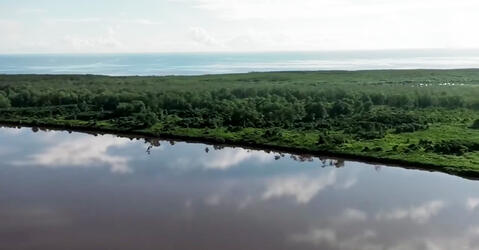You are here
From emotion to data
In France, everybody remembers where they were and what they were doing when they learned of the widespread terrorist attacks of November 2015. The memory of a dramatic event seems to leave an indelible mark on our brains. But memories also change, evolve with time.
A team of researchers is trying to understand the dynamics of memory in the long run. They collect their data from within the stories told by survivors, rescue workers, as well as by those who experienced this tragedy from afar…
Scientifically studying the construction of a collective memory requires huge amounts of data and personal stories. Charline Hellec is one of the mediators who reached out to those who live in the neighborhood, and tried to convince them to share their memories of this dramatic day.
CHARLINE HELLEC, mediator
The subject we are dealing with is very sensitive. We needed to be cautious when recruiting participants. But once they understood that this was a scientific approach, they were reassured. Keep in mind that those who were closely affected by the attacks had already been heavily solicited by the media and could have been suspicious of our intentions.
Building upon this fieldwork, researchers were then able to conduct video interviews with a thousand volunteers. They were divided into four circles depending on their proximity to the events - going from survivors, to people living in three distant cities.
The interviews all take place at the INA, the French film and video archive institute, or here, at the video production department of the French Defense Ministry. Each volunteer will be interviewed four times in a period spanning 10 years, adding their stories to the massive memory database of the terrorist attacks.
SOPHIE BOIRE, investigator
The video interviews are in two parts. In the first part, the interviewee is encouraged to relate his experience freely, although the protocol requires us to address certain issues. The second part is made up of closed or semi-closed questions, calling for shorter answers.
The interview guide was drafted by historians, sociologists, neuroscientists and other researchers. It follows a rigorous scientific protocol, while also taking into account the post-traumatic stress of those interviewed.
SOPHIE BOIRE
Some testimonies are very emotional, but the protocol helps us keep our data collection objective in mind. The best way to control our emotions on the spot is to tell ourselves that we cannot appropriate these people’s memory, and that we need to stay in our place.
CARINE KLEIN
We put the human factor at the center. We have an interview protocol, with scientific and research perspectives, but what matters is to make the participants [take a side-look at their lives’ stories to] embark on a ten-year scientific journey with us.
More than 2,000 hours of video have already been produced. But these memories must be converted into useful bits of data before researchers can use them. Only then can this trove of information go through statistical analysis for instance.
DENIS PECHANSKI, historian
The first step is to make a fast speech-to-text transcript, then clean it. But it is obviously not enough, and image is also very important. Image brings us material for a behavioral analysis, which relies on such parameters as voice or facial expressions. The data must be usable by different researchers in their respective fields: sociologists, historians, neuropsychologists….
This data will not be drawn exclusively from the volunteers’ recollections…
Out of the 1,000 study participants, 180 of them will go to a brain imaging platform, in Normandy. Here they will take neuropsychological tests as well as undergo anatomical and functional MRIs, in order to study the effect of this evolving trauma on the brain.
FRANCIS EUSTACHE
We will study the participants’ capacity to control intrusions, which are all the images and thoughts that impose themselves on them and of which they can't let go. To follow people over several years will teach us more about the positive and negative factors, including resilience factors, that help them fight post-traumatic stress.
Among the questions facing the researchers, one of them specifically stands out.
DENIS PESCHANSKI
Are we building a shared story or do we have different, seperate stories, depending on the circle we are part of ? Collective and individual memory is not frozen in time. They evolve...
The first results of the November 13th study should be published by Fall 2017. The final conclusions are expected in 2028, two years after the final interviews have been recorded.
Data Recall: Terrorist Attacks and Memory
How is collective memory shaped after tragic events like the November 2015 terrorist attacks in Paris? A team of researchers are tapping into the memories of 1000 participants over a period of 10 years. The idea is to follow how individual memories evolve, influence one another until a collective story emerges.
Charline Hellec – Mediator
Sophie Boiré – Investigator
Carine Klein – Research engineer at CNRS and Secretary General of the 13 novembre program
Denis Peschanski – Research director at CNRS, Centre Européen de Sociologie et de Science Politique
(CNRS – Université Paris 1 Panthéon – Sorbonne – EHESS)
Scientific director of the Matrice Equipex
Francis Eustache – Study director at the École pratique des hautes études
Director of the research center "Neuropsychologie et neuroanatomie fonctionnelle de la mémoire humaine"
Inserm – EPHE – UNICAEN
Director of the GIP Cyceron, Caen





